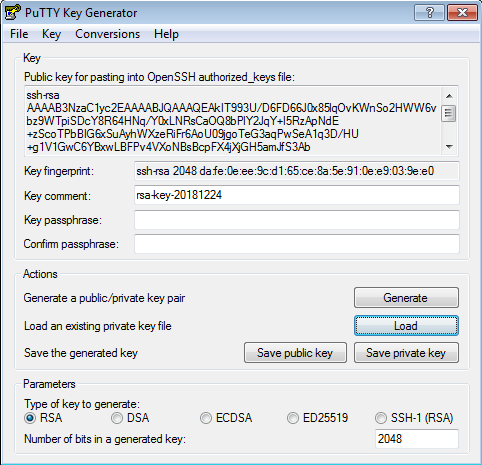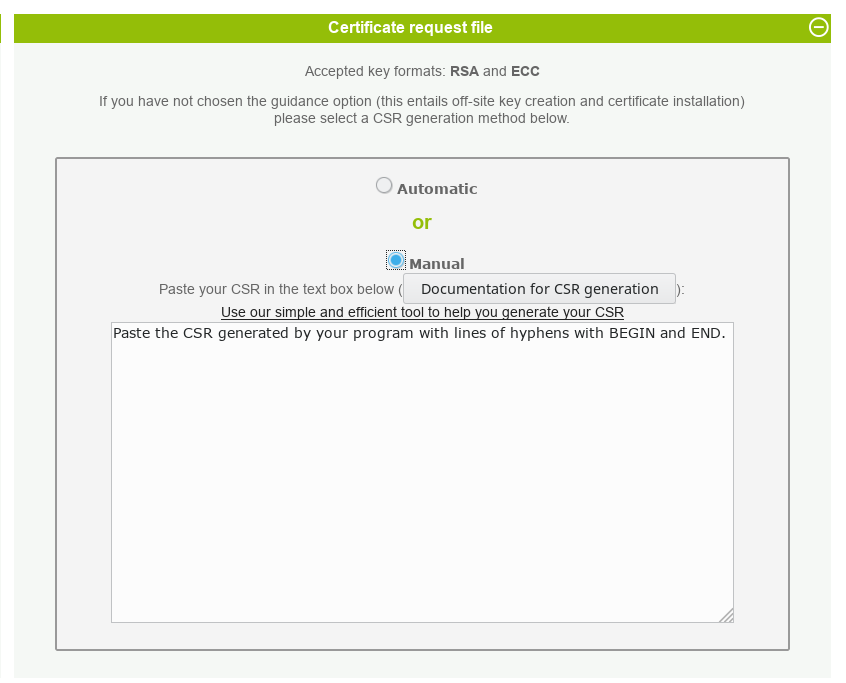Openssl Generate Ecc Key With Password
- Openssl Generate Ecc Key With Password Codes
- Openssl Generate Ecc Key With Password Key
- Openssl Random Password
These instructions are suitable for OpenSSL 0.98 and higher.
Preamble
Creating ECC Certificates. Previously on Building an OpenSSL CA, we created a certificate revocation list, OCSP certificate, and updated our OpenSSL configuration file to include revokation URI data.

- Use the following command to generate the CSR: openssl req -new -sha256 -key fabrikam.key -out fabrikam.csr When prompted, type the password for the root key, and the organizational information for the custom CA: Country, State, Org, OU, and the fully qualified domain name. This is the domain of the website and it should be different from the.
- Choose a file's name that fits you and generate the key with the following command: openssl ecparam -out www.example.com.key -name prime256v1 -genkey; If you want this key to be protected by a password (that will be requested any time you'll restart Apache): openssl ec -in www.example.com.key -des3 -out www.example.com.key.
ECC certificates can have compatibility issues with servers and browsers (see Technical limitation of ECC certificates). Before placing an order for such a certificate, you should test them. expressvpn mac download previous versions To do so, use our Generator of self-signed certificate. Select ECC option and get your certificate in a matter of minutes!
In order to gain some time, you can now generate your command line with our CSR creation assistant tool. Just copy/paste to finalize!
1- Generate the private key
- Connect under
rootand access the setup directory of your Apache server.
It is often: - We'll place our working files here but you can choose an other repertory.
- Choose a file's name that fits you and generate the key with the following command:
- If you want this key to be protected by a password (that will be requested any time you'll restart Apache):
Make a backup copy of the .key file!

- Protect your file with:
2- Create your certificate request (CSR)
- Use this command to generate the CSR:
- The system will then ask you to fill in fields. To do so respect instructions of the page Obtain a server certificate
Country Name (2 letter code) []: (FR in France for example)
State or Province Name (full name) [Some-State]: (your state or province name, name of your département in France)
Locality Name (eg, city) []: (the name of your city)
Organization Name (eg, company) []: (your organization name)
Organizational Unit Name (eg, section) []: (do not fill - advised - or enter a generic term such as 'IT Department'.)
Common Name (eg, YOUR name) []: (the name of the website to be secured)
Email Address []: (let blank) - Do not fill in fields such as: 'A challenge password' or 'An optional company name'
3- Finalize the order process
- Use the appropriate link to place your order on our website. See Access an order form.
- Copy/paste the content of the www.example.com.csr file in the form. The system will automatically detect the format of the CSR to issue an ECC certificate.
Openssl Generate Ecc Key With Password Codes
Useful links
- Generate your command line with our CSR creation assistant tool.
If you find yourself needing to change the password on your private key without affecting the data that's already stored in your database, here's how to do it. The OpenSSL documentation is a little dense on this topic, but these step-by-step instructions should work.
First, move the old private key to a different location:
mv config/private.pem config/private_old.pem
Next, delete the old public key and key pair. Strictly speaking, you don't need to delete the public key, but if you want to regenerate it for some reason, you can do that:
Openssl Generate Ecc Key With Password Key
rm config/keys/data/public.pem rm config/keys/data/keypair.pem
Now, change the password on the private key:
openssl rsa -in config/private_old.pem -out config/private.pem -des3
You'll be prompted for the old password first, followed by two prompts for a new password.
Now extract the public key and regenerate the key pair. Again, extracting the public key is optional, as it will be identical.
openssl rsa -in config/private.pem -out config/public.pem -outform PEM -pubout cat config/private.pem config/public.pem >> config/keypair.pem
Openssl Random Password
That's it. Don't forget to change the password on your call to decrypt!